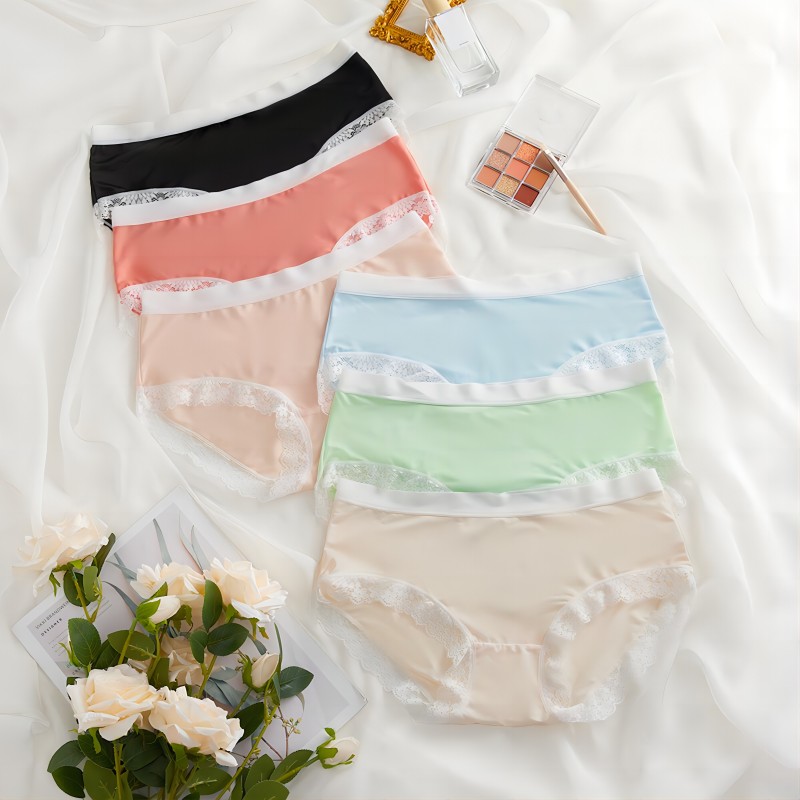Fabric Catalog Of Milk Fabric | Properties, How its Made and Application
Billions of liters of milk are wasted or spoiled every year around the world. Surprisingly, however, these raw material sources have become the basis of the milk fabric fashion industry - a promising eco-friendly material for the future.
As the world becomes more focused on sustainability, the fashion industry is not immune to this trend. Milk fabric, as a new type of fabric, has attracted people's attention for its environmental protection and unique properties. Instead of drinking milk, we can now "wear" milk by using milk fabric. So, what is milk fiber fabric and why has it become a new fashion trend?
1. What is milk fabric?
Milk fabric, also known as casein fiber fabric, is a fabric made from the casein protein found in milk. Through special processing methods, the main components of milk are extracted and converted into fiber. Milk fabric is unique in that it contains a composition of about 15 amino acids that nourish and protect the skin.
Milk fabric has hygroscopic properties, which can bring soft and comfortable feeling to the skin. It is an environmentally friendly product and has been certified by the international eco-textile Standard Oeko-Tex Standard 100 since April 2004.
As a unique fashion fabric, milk fabric has several significant advantages. Here are some advantages of milk fabric:
1. Smoothness: Milk fabric is highly breathable, leaving your skin feeling cool and comfortable. The natural fibers in the milk fabric promote air circulation and hygroscopic properties, helping to feel fresh and dry throughout the day. The smooth surface gives the skin a comfortable, gentle feeling. This makes it ideal for people with sensitive and easily irritated skin.
2. Natural luster: Milk fabric has a natural luster, giving a feeling of elegance and temptation. When using milk fabric to make a garment, the wearer will feel confident and noticeable.
3. Comfort: Milk fabric brings a gentle, breathable feeling to the skin. It does not cause discomfort or retain heat, providing all-day comfort.
4. Moisture absorption: Milk fabric has good moisture absorption properties, which helps to keep the skin breathable and dry. This is especially useful in humid environments or during the summer months.
5. Degradability: Milk fabric is a biodegradable fabric. This means that if a product is forgotten or discarded, it breaks down and has no negative impact on the environment. However, to ensure efficient decomposition, milk fabric should be placed in a biodegradable environment such as organic waste treatment.
2. How is milk fabric made?
Let's explore the most common manufacturing processes used in the production of milk fiber fabrics:
2.1. Traditional milk fiber fabric production process
1. Milk extraction: Milk is degreased to extract fat, then dehydrated and fermented. At this stage, the milk takes on a similar appearance to milk protein powder.
2. Casein fiber extraction: Casein fiber is extracted, solidified, thoroughly rinsed and dried, and then ground into a fine powder form. The milk powder is then dissolved and refined to remove non-casein substances.
3. Casein dissolution: casein is dissolved in alkali solution and matured until it reaches a certain viscosity. The solution is then filtered and dehydrated.
4. Fiber stretching: The fiber stretching solution is extruded into the coagulation bath through the nozzle. The coagulation bath contains sulfuric acid, formaldehyde, glucose and water to solidify the fibers like viscose fibers.
5. Chemical treatment: After leaving the coagulation bath, the fibers undergo a chemical treatment process to harden them. Formaldehyde is a key ingredient in most curing methods. The fibers are synthesized and soaked in a formaldehyde solution while undergoing a stretching process.
6. After finishing: the fiber is rinsed, dried, twisted and cut into short fibers. Casein fibers are produced as short fibers and can be used in clothing.
2.2. Alternative production methods
This is a simplified process that involves fewer steps and chemicals:
1. Ferment the milk, then remove the fat and water.
2. Extract casein fiber, dissolve milk powder, and remove non-casein substance.
3. Dip casein powder into alkali solution and form solution through nozzle.
4. Immerse the solution in sulfuric acid to remove the alkali.
5. The fibers are stretched and stretched into milk fibers.
6. Subsequently, the fibers are treated with aluminum salts and formaldehyde to form fabrics suitable for the production of clothing from food.
Modifications have been made to the production process to reduce the toxicity of formaldehyde and the harmful effects of other chemicals. Modern casein fiber production methods involve a process called copolymerization, in which casein is treated with acrylonitrile instead of formaldehyde. Although acrylonitrile still has negative effects, the method avoids the use of toxic and carcinogenic chemicals.
3. The application of milk fabric
Milk fabrics are used to make various types of clothing such as shirts, dresses, pants, jackets and many other products. The milk fabric is smooth and gentle to the touch, providing a comfortable and soft feeling for the wearer.
At the same time, the natural gloss of the milk fabric adds elegance and appeal, making the wearer feel confident and stand out from the crowd. Milk fabrics also have excellent moisture absorption, helping to keep the skin breathable and dry, especially in humid environments.
Milk fabrics offer a variety of benefits to users. First, it has excellent moisture absorption and breathability, keeping the skin dry and cool. In addition, the milk fabric has strong sunscreen properties, which can protect the skin from the sun.
Milk fabric is recyclable. Because milk fiber contains protein, it has the ability to be broken down and recycled. The recycling process of milk fabric requires specialized technology to separate the components and reuse them. This helps to reduce waste and protect the environment.
Only a few suppliers in the world can meet all the standards for milk fabrics. Our brand Jinfangni is a reliable destination for obtaining milk fabrics. We have close cooperation with fabric suppliers all over the world. Welcome to contact us to customize milk fabric underwear!



